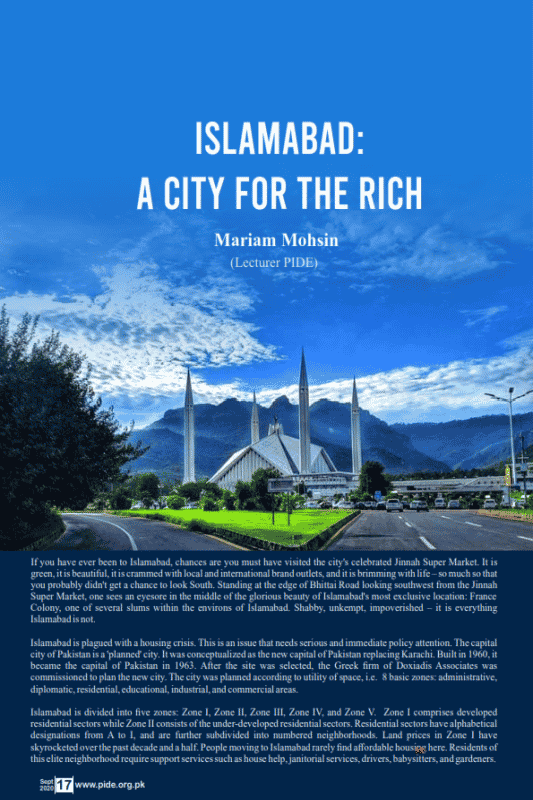
Pakistan Institute of Development Economics
- Home
Our Portals
MenuMenuMenuMenuMenuMenuMenu - ResearchMenuMenuMenuMenuMenuMenuMenu
- Discourse
- The PDR
- Our Researchers
- Academics
- Degree Verification
- Thesis Portal
- Our Portals
ISLAMABAD: A CITY FOR THE RICH (P & R Vol.1 Issue 1)
If you have ever been to Islamabad, chances are you must have visited the city’s celebrated Jinnah Super Market. It is green, it is beautiful, it is crammed with local and international brand outlets, and it is brimming with life – so much so that you probably didn’t get a chance to look South. Standing at the edge of Bhittai Road looking southwest from the Jinnah Super Market, one sees an eyesore in the middle of the glorious beauty of Islamabad’s most exclusive location: France Colony, one of several slums within the environs of Islamabad. Shabby, unkempt, impoverished – it is everything Islamabad is not. Islamabad is plagued with a housing crisis. This is an issue that needs serious and immediate policy attention. The capital city of Pakistan is a ‘planned’ city. It was conceptualized as the new capital of Pakistan replacing Karachi. Built in 1960, it became the capital of Pakistan in 1963. After the site was selected, the Greek firm of Doxiadis Associates was commissioned to plan the new city. The city was planned according to utility of space, i.e. 8 basic zones: administrative, diplomatic, residential, educational, industrial, and commercial areas.



